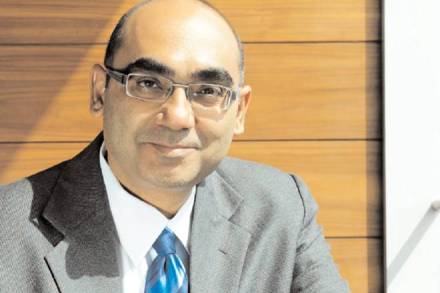Recapitalisation of banks is a positive move from the non-banking financial companies’ perspective as it will give access to credit on better terms and more opportunities to sell bank infrastructure and priority sector loans, says Harshil Mehta, joint managing director and CEO, DHFL in an interview to Saikat Neogi. Excerpts:
How much is the government’s affordable housing push driving your disbursement and what is the potential ahead?
With the government pushing affordable housing and Housing for All by 2022, they help us work towards the vision of catering to customers at the base of the pyramid, comprising the low and middle income (LMI) category with greater commitment. Various schemes like PMAY and CLSS are focused on affordable housing, including on the borrowing side. Our 350 branches are predominantly located in metros and tier 2 and tier 3 markets and that is where growth is coming from. In the quarter ended September 2017, our home loan disbursements grew at 28% and overall business grew at 50%. DHFL’s assets under management stands at Rs 94,089 crore as on September 30, 2017. In the short-to medium term, we are optimistic that our disbursements would grow in the range of 30% this year as compared to 20% in the past.
If there is so much potential in the home loan segment, why is that the credit growth of banks are so muted?
There are huge areas which banks have to service, especially when you look at regional rural banks and banks in smaller towns. Banks have to look at various other schemes like crop loan, cattle loans, etc. Housing finance companies, under NHB, have been set up with a specific objective of providing home loan, loan against property, project finance and SME loan. NBFCs and financial institutions like DHFL specialise in enabling home ownership to the LMI segment and have developed advantages like credit underwriting skills, customer outreach, enhanced service and a unique business model which give us an edge as compared to other financial institutions.
After recapitalisation of state-owned banks, will there be more competition in lending?
Recapitalisation is a positive move from the NBFC perspective as it will give access to credit on better terms and more opportunities to sell bank infrastructure and priority sector loans. The market potential is huge as mortgage lending is a strong driver of growth for both housing demand and construction of houses driven by urbanisation. Through the recent recapitalisation initiative, competition will expand the market across all retail lending portfolios. However, specialised credit lending companies will have an edge in this scenario with better turnaround time, reach, last-mile agility, and use of technology. NBFCs with their large distribution network and focused customer service emerge stronger in retail lending as they are equipped to handle the voluminous business. We foresee a positive uptrend for NBFCs, specifically in the affordable housing and SME segment.
DHFL has reduced dependence on banks for funds. How has that helped in keeping cost of funds low?
We have aggressively pushed for diversification of our borrowings. At one point of time 71% of our borrowings was from banks and FIs, which we have now reduced to 43% as on September 30, 2017. We started diversifying our portfolio with funds including bonds, NCDs, commercial paper, retail fixed deposits, which are AAA rated. We continue to focus on retail fixed deposits as they help in portfolio diversification. Currently, DHFL FD rates are 50-100 basis points higher than bank deposits and are backed by AAA rating which indicates highest safety. Last year, we did two NCDs of Rs 14,000 crore and the intent of the liquidity was to lower our costs of funds. In the last three quarters we have been able to reduce our cost of funds by 47 bps. Our average ticket size of incremental home loan is Rs 17 lakh. We have securitised 12% of our portfolio. So, with bank recapitalisation, banks are likely to look for more securitisation which will benefit segment-focused companies like DHFL as they will have more funds to lend.
How do you conduct the credit appraisal of people applying for loans?
The process is comparatively easier for the salaried class where we refer to the bank details for credit underwriting. For the non-salaried class with cash income in the unorganised sector, we apply our three-decade-old experience and protocols for credit underwriting through which we are able to ascertain their cash flow. Thus we get the ballpark earning figure of the person. We then approach the firm where the person is working to understand his monthly income. For the self-employed, we assume a margin/profit range that they could possibly make in their respective business or industry. We look at the topline and arrive at the cash flow. So, we analyse the subjective and objective data to arrive at an assessment.
